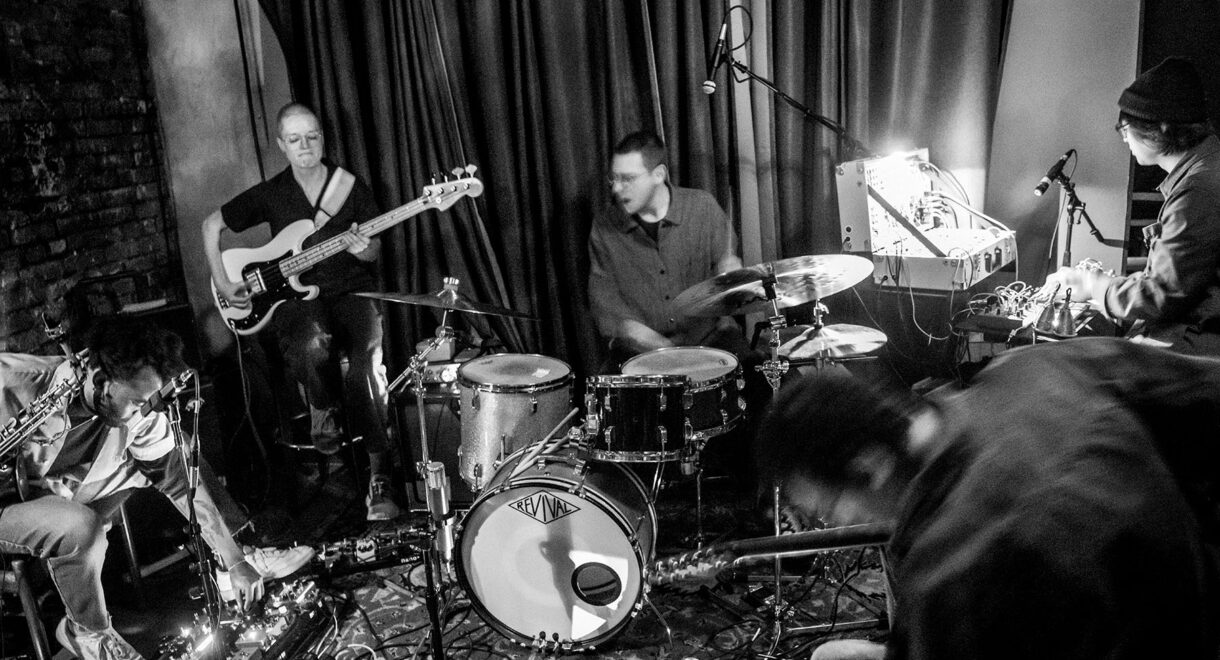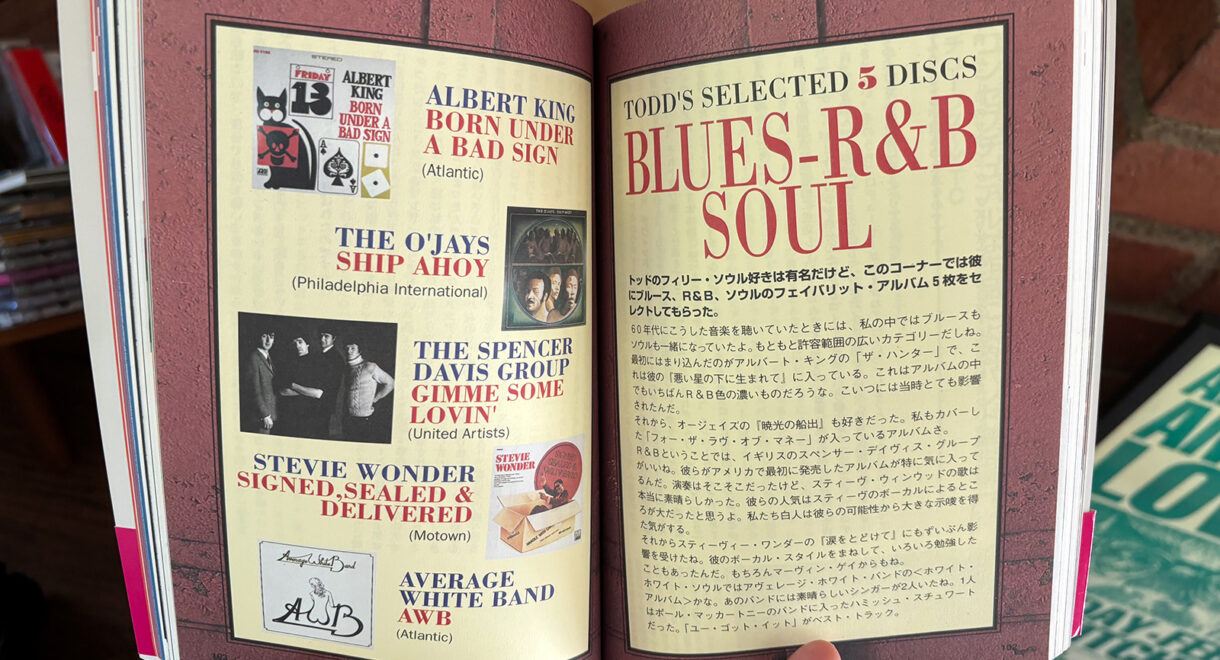In conversation with Small Medium Large, a new quintet from the burgeoning new West Coast jazz & improvised music scene. In 2018, LA-based jazz and post-rock guitarist Jeff […]
The Serge Gainsbourg and Babatunde Olatunji Connection

The journey of a beat from Nigeria to New York to Paris to ‘New York – U.S.A.’
Long before he established a reputation as a clever songwriter who sang winking innuendos with a uniquely French sense of cool, Serge Gainsbourg in the 1950’s was a pianist backing other singers in Parisian cabaret clubs.
From there, he established himself as a moderately successful recording artist, writing and recording a style of French ’chanson’ to which he later added strains of American bebop and cool jazz. By 1964, Gainsbourg had carved out a workman-like recording and performing career of a professional musician who was active, but hadn’t yet achieved the commercial breakthrough he craved.
His records and concerts were finding an audience, but a frustratingly small one. It wasn’t uncommon for Gainsbourg’s concert dates to get canceled due to poor ticket sales. Still, he was able to survive by writing music for friends in the French film and television industries, churning out musical backgrounds and support pieces for TV variety and sketch programs (little of which was recorded for posterity).
As the electrifying sound of the Beatles and their British Invasion brethren dominated European airwaves and charts in 1963-64, Gainsbourg – who possessed neither the youthful charm nor the rock and roll energy of these bands – despaired to a friend, “I’m dead.”
In an interview with Patrick Chompré and Jean-Luc Leray from 1989, Gainsbourg reflected:
“Yeah, I was having a pretty rough time of it back then – I had this air of a down on his luck songwriter about me. All these young guys with their electric guitars appeared on the scene making life difficult for me. I wouldn’t say I was exactly out of the running, but they annoyed the hell out of me because all the young kids back then idolized them and that meant I was in trouble.”
After the despair – and some strategic thinking – Gainsbourg responded to the challenge posed by rock and roll in a couple of ways. First, he paused his own career as a solo artist and chose instead to work the youth market from a behind-the-scenes position by writing songs for teenage female performers like France Gall, which in turn helped co-create the French ‘yé yé’ pop trend (itself named after the Beatles’ “yeah, yeah, yeah” refrain).
Also, when he later resumed recording for himself, he did so in London using English session musicians – effectively incorporating the British beat into his Franco-musical mix. Examples of this include the song Initiales. B.B. and the Histoire de Melody Nelson album.
From the same 1989 interview:
“I wanted the British sound. I’d had enough of “Frenchies”. The British sound was a lot cooler, it had a different style. I don’t like stagnation. One of my main motivations throughout my career has been my desire to change styles.”
But before making those two strategic moves, Gainsbourg tried to create a hit within – or in spite of – the rock and roll scene.
For his 1964 album Gainsbourg Percussions, rather than integrate contemporary rock sounds (which of course were inherently derived in part from African-American musical forms), Gainsbourg dug deeper into to Africa, opting to employ musical influences directly from West Africa, Brazil, and Cuba.
The song “Marabout,” for example, was built on a thumping polyrhythmic beat driven by an African drum section and accompanied by Gainsbourg’s voice and a chorus of female backing vocals – but no melodic or Western instruments.
Gainsbourg’s experiments with West African, Afro-Cuban, and Brazilian music on Gainsbourg Percussions would help open the door for other ‘world music’ hybrids created by later generations of Western musicians.
In 1965, Gainsbourg appeared on the musical TV program Discorama to discuss and promote Gainsbourg Percussions. Host Denise Glaser asked him, “Why African rhythms?” Gainsbourg’s answer:
“Because we are in the 20th century. After, or at least next to electric guitars, we have to impose ourselves with something violent.”
{“Parce que, nous sommes au 20ieme siècle. Après, du moins à côté des guitares électriques, il faut s’impose par quelque chose de violent.”}
In another interview, Gainsbourg compares the emphasis on musical rhythms to the abandoning of pictorial representation in abstract painting.
“I remember doing the following reasoning: abstract art has made painting explode: with music, when we make forms burst, only the percussion remains, to the disadvantage of harmony.”
{“Je me souviens d’voir fait le raisonnement suivant: l’art abstrait a fait éclater la peinture: quand en musique, on fait éclater les formes il ne reste que les percussions, au désavantage de l’harmonie.”}
He argued that African rhythms could shake up western pop music in the same way that rock and roll had been energized by electric guitars, and how visual art had been shaken up by abstraction. Glaser and Gainsbourg also discuss this “imposition” of foreign rhythms on French pop music:
Glaser: “You have married two elements which appeared to be very different. This means an African or Afro-Cuban music or jazz music space, with texts of your own. I believe the rhythms are not new, but the marriage is new.”
{“Vous avez marier deux éléments qui apparaissaient comme très différents. Cette à dire un espace musique africaine ou afro-cubain ou musique de jazz, avec des textes à vous. Je crois que les rythmes ne sont pas nouveaux, mais c’est le mariage qui est nouveau.”}
Gainsbourg: “Yes, certainly, the rhythms are not new, they come from Nigerian folklore. Yes, French adapted to that rhythm, maybe it’s new, it’s certainly new.“
{“Oui, certainement, les rythmes ne sont pas nouveaux, ils viennent du folklore nigérien. Oui, le français adapté as ce rythme-là, c’est peut-être nouveau, c’est certainement nouveau.”}
This novel mix of musical elements gave record label Philips high sales hopes, and they granted Gainsbourg his highest recording budget to date. He released the album as part of their “Les grands auteurs & compositeurs interprètes” series (“Great Authors & Composer-Performers”).
Still, upon initial release of Gainsbourg Percussions, sales totaled only 3,000 copies.
Despite this disappointment, in the decades since, Gainsbourg’s experiments with West African, Afro-Cuban, and Brazilian music on Gainsbourg Percussions would help open the door for other ‘world music’ hybrids created by later generations of Western musicians – see Mick Fleetwood’s The Visitor (1981), Paul Simon’s Graceland (1986), and David Byrne’s Rei Momo (1989), to name a few. His experiments also pointed the way for some of Gainsbourg’s own work later on; the call-and-response vocals on the African numbers on Gainsbourg Percussions foreshadowed his liberal use of the technique during his revered late-60’s period on songs like Qui est ‘In,’ Qui est ‘Out’, and Docteur Jekyll est monsieur Hyde.
The adoption of black African beats on Gainsbourg Percussions also served as a musical prototype for Gainsbourg’s immersion into reggae beginning in the late 1970’s, when he recorded his Aux Armes Et Cætera album in Jamaica with Sly and Robbie, Marcia Griffiths, Rita Marley, and other ace reggae musicians.
But where did the African rhythms on Gainsbourg Percussions come from?
The answer is found on the Drums of Passion album by West African drummer Babatunde Olatunji. Even a casual listen of both albums reveals that the African inflected songs on Gainsbourg Percussions were wholesale lifts and reuses of entire songs from Drums of Passion.
For example, Gainsbourg’s song Marabout takes its instrumental arrangement, tempo, musical key, and lead and backing vocal melodies from Olatunji’s Jin-Go-Lo-Ba (Drums of Passion). Similarly, Gainsbourg’s Joanna is based on Olatunji’s Kiyakiya (Why Do You Run Away?), and New York – U.S.A. is a lyrical rewrite of Akiwowo (Chant to the Trainman). For good measure, “Pauvre Lola” features an acoustic guitar riff pinched from “Umqokozo” by Miriam Makeba.
(Stay tuned for the second part of this extended deep dive)
Read the Next installment: Babatunde Olatunji and his influence on Serge Gainsbourg’s ‘New York – U.S.A.’
French translation assistance courtesy of Chantal Aquin.
In Sheep’s Clothing is powered by its patrons. Become a supporter today and get access to exclusive playlists, events, merch, and vinyl via our Patreon page. Thank you for your continued support.










